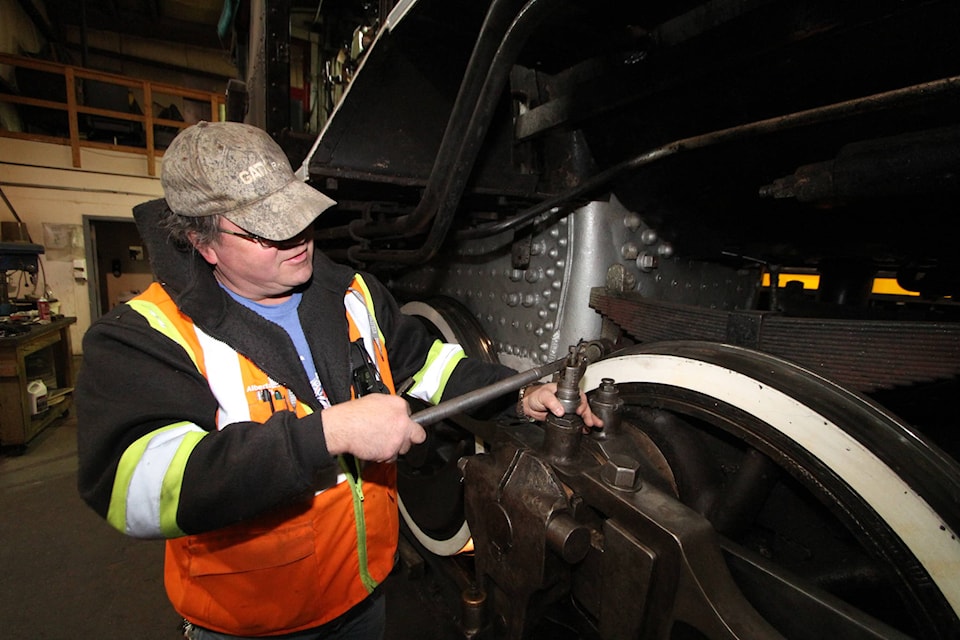“It’s basically alive itself.”
That’s how Kelly Gillespie feels when he’s at the controls of No. 41, Alberta Prairie Railway’s treasured 1920 steam engine.
“It’s awesome. There’s nothing like it,” he says. “It’s a totally different experience.”
No. 41 was in the shop in Stettler this week getting some final tuning up to be ready for the coming tourism season that will see around 20,000 passengers make the trip to Big Valley and back.
Just about all of No. 41 is original. A few valves and some plumbing have been changed out over the years, but the bulk of the steam engine is sporting the parts it came with when it rolled out of the Pennsylvania factory of Baldwin Locomotive Works.
There have been some changes. It is no longer coal fired, but burns oil — which comes from recycled oil from standard road vehicles.
No. 41 will burn about 45 to 70 litres of oil per mile (1.6 kilometres) of travel. Over the season, the 80-tonne engine will run about 3,500 kilometres, and the boiler is under pressure for about 600 hours a year.
From cold, it takes about five hours to bring the boiler up to the 200 pounds-per-square-inch operating pressure.
Gillespie said he learned how to operate the engine from a group of retired railwaymen who helped Alberta Prairie Railway run its steam engines.
Keeping it running requires tender loving care.
“Every year, the engine is stripped down to nakedness,” said Gillespie.
The super heaters are pulled out, and the boiler is tested by pressuring it up with water far beyond the steam pressures that it operates under.
Every component is tested; the giant rods that push the wheels are pulled off and cleaned.
Every five years, an even more extensive overhaul takes place to ensure No. 41 keeps running in its second century.
